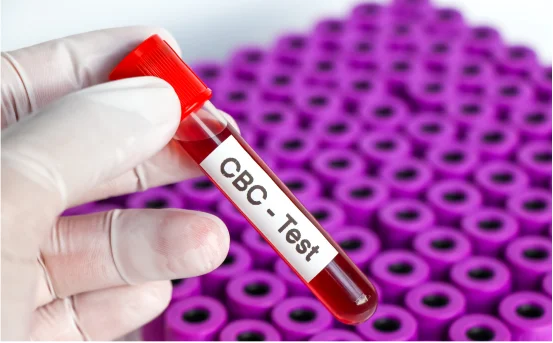Introduction
Atherectomy is a minimally invasive medical procedure used to remove plaque buildup from arteries and restore healthy blood flow. It is most commonly used to treat peripheral artery disease (PAD) or coronary artery disease, conditions caused by the narrowing or blockage of arteries due to plaque composed of cholesterol, calcium, and other substances.
While the term “symptoms of atherectomy” may sound like it refers to the procedure itself, it actually relates to the signs and symptoms that indicate someone may need atherectomy. These symptoms result from reduced blood flow to vital organs or limbs, and if left untreated, they can lead to severe complications such as tissue damage, heart attack, or stroke. Below are the key symptoms of atherectomy as part of your treatment plan.
Symptoms of Atherectomy
- Leg Pain and Cramps (Claudication) :- One of the most common symptoms indicating the need for atherectomy is leg pain, particularly during physical activity. This symptom, known as claudication, occurs when narrowed arteries reduce the amount of oxygen-rich blood reaching your muscles. The pain typically appears in the calves, thighs, or buttocks and worsens with walking or climbing stairs. It often improves with rest, but returns as soon as you resume activity. Over time, the pain may become more severe and occur even while resting, signaling a more advanced stage of arterial blockage. Claudication is a clear sign that blood flow to your lower extremities is impaired, and if left unaddressed, it can progress to critical limb ischemia, a serious condition that may require surgery like atherectomy to restore circulation.
- Numbness or Weakness in the Limbs :- Numbness, tingling, or weakness in your legs or arms can also indicate reduced blood flow caused by arterial blockages. When the muscles and nerves in your limbs do not receive adequate oxygen, their function declines, leading to sensations of pins and needles or a heavy, weak feeling. These symptoms often develop gradually and may be overlooked at first. However, worsening numbness or weakness, particularly when combined with leg pain, can significantly limit mobility and increase the risk of falls or injuries. Atherectomy may be recommended to remove plaque and restore normal circulation, alleviating these symptoms and preventing further nerve and muscle damage.
- Non-Healing Wounds or Ulcers :- Poor blood circulation caused by arterial blockages can delay the healing of cuts, sores, or ulcers on the feet or legs. In some cases, these wounds may not heal at all and can become infected. Non-healing wounds are a red flag that tissues in the affected area are not receiving enough oxygen and nutrients to repair themselves. This is especially concerning for people with diabetes, as they are already at increased risk of infections and amputations. Atherectomy can help by restoring blood flow to the affected area, improving the body’s ability to heal wounds and reducing the risk of severe complications.
- Coldness in the Feet or Lower Legs :- If one foot or lower leg consistently feels colder than the other, it may be a sign of poor blood circulation due to blocked arteries. This temperature difference occurs because the affected limb is not receiving enough warm, oxygenated blood. Coldness in the feet or legs is often accompanied by other symptoms like numbness or pain. It can be particularly noticeable in colder weather or after periods of inactivity. Atherectomy may be considered when such circulation problems persist, as restoring blood flow can normalize temperature and reduce the risk of tissue damage.
- Discoloration of the Skin :- Changes in skin color, particularly in the lower extremities, can signal that blood flow is compromised. The skin may appear pale, bluish, or dark red depending on the severity and duration of the blockage. Discoloration is often most noticeable in the toes or feet, where circulation is weakest. In advanced cases, the skin may become shiny, tight, or even develop gangrene if blood flow is completely blocked. Prompt medical attention is essential when these symptoms appear, as they may indicate a severe arterial blockage that requires atherectomy or other interventions.
- Pain or Pressure in the Chest (Angina) :- Atherectomy is also used to treat blockages in the coronary arteries, which supply blood to the heart. One of the most common symptoms of coronary artery disease is angina, a type of chest pain or discomfort caused by reduced blood flow to the heart muscle. Angina can feel like pressure, squeezing, or a burning sensation in the chest and may spread to the shoulders, arms, neck, or back. It often occurs during physical activity or emotional stress and improves with rest. Persistent or worsening angina should never be ignored, as it may signal a serious blockage in the coronary arteries that could lead to a heart attack. Atherectomy can be used in such cases to restore blood flow and reduce the risk of life-threatening complications.
- Fatigue or Reduced Exercise Tolerance :- Chronic fatigue or a noticeable decrease in your ability to perform physical activities may also be linked to arterial blockages. When your muscles and organs do not receive enough oxygenated blood, your energy levels drop, making even simple tasks feel exhausting. This symptom is often accompanied by leg pain, numbness, or other signs of poor circulation. If you notice a sudden or unexplained decline in your stamina, it is important to consult a doctor for evaluation. Atherectomy may be recommended to restore normal blood flow and improve your quality of life.
- Hair Loss or Slow Hair Growth :- Poor circulation caused by arterial blockages can also affect hair and nail growth in the lower extremities. You may notice thinning or loss of hair on your legs or feet, or your toenails may grow more slowly than usual. While these changes may seem minor, they are indicators that the tissues in your lower extremities are not receiving adequate nutrients and oxygen. Atherectomy may be part of the treatment plan to address the underlying circulation issues.
Conclusion
The symptoms that suggest the need for atherectomy are often related to reduced blood flow caused by arterial blockages. Leg pain during activity, numbness, non-healing wounds, cold or discolored skin, chest pain, and chronic fatigue are all warning signs that your arteries may be narrowed or blocked.
Recognizing these symptoms early and seeking medical evaluation is crucial, as untreated arterial disease can lead to severe complications, including heart attacks, strokes, or limb amputations. Atherectomy is an effective procedure for physically removing plaque and restoring healthy blood flow, improving both quality of life and long-term outcomes. If you are experiencing any of these symptoms, consult a vascular specialist to determine whether atherectomy or another treatment option is right for you. Early intervention can save lives and preserve your health.























